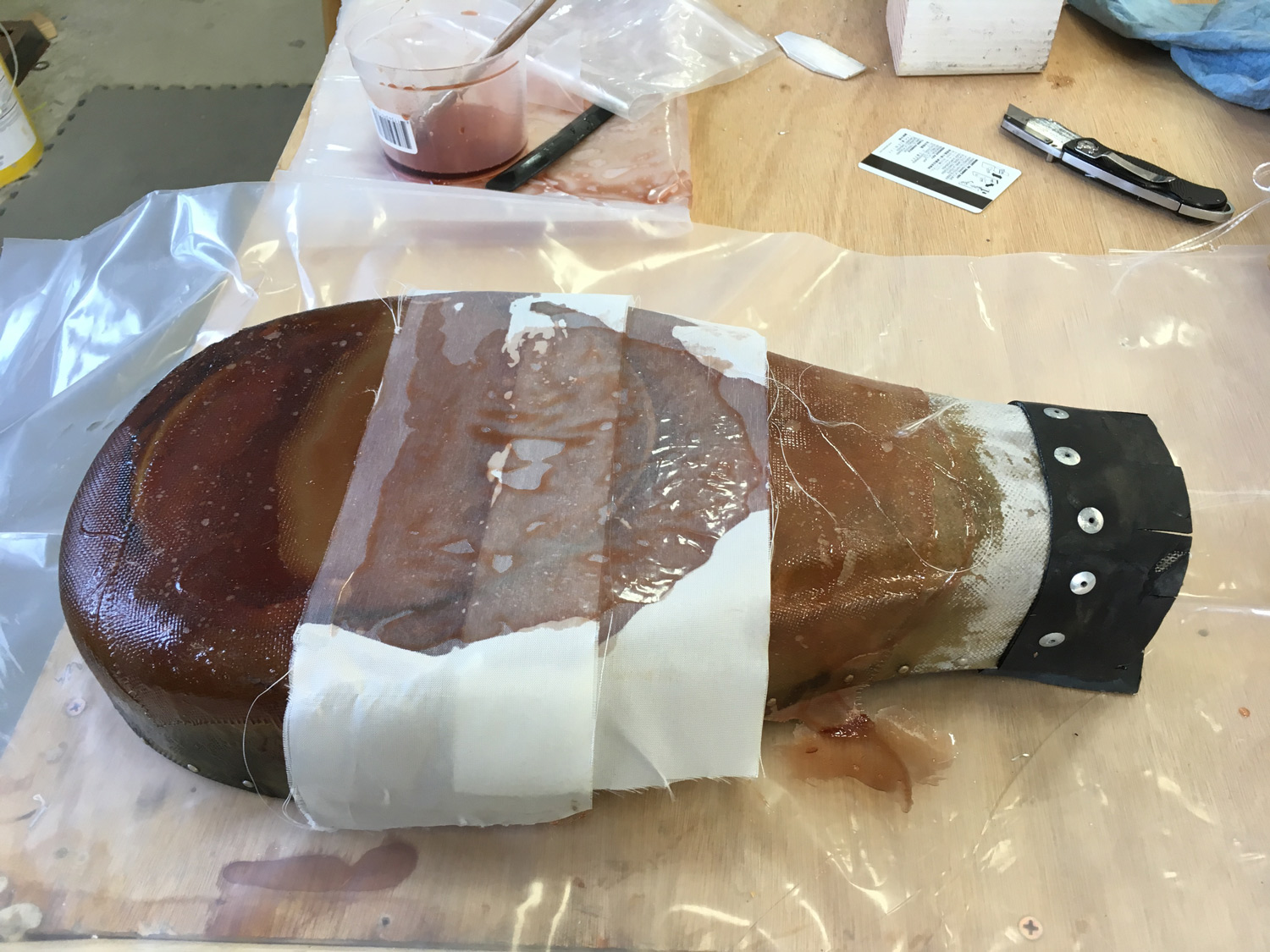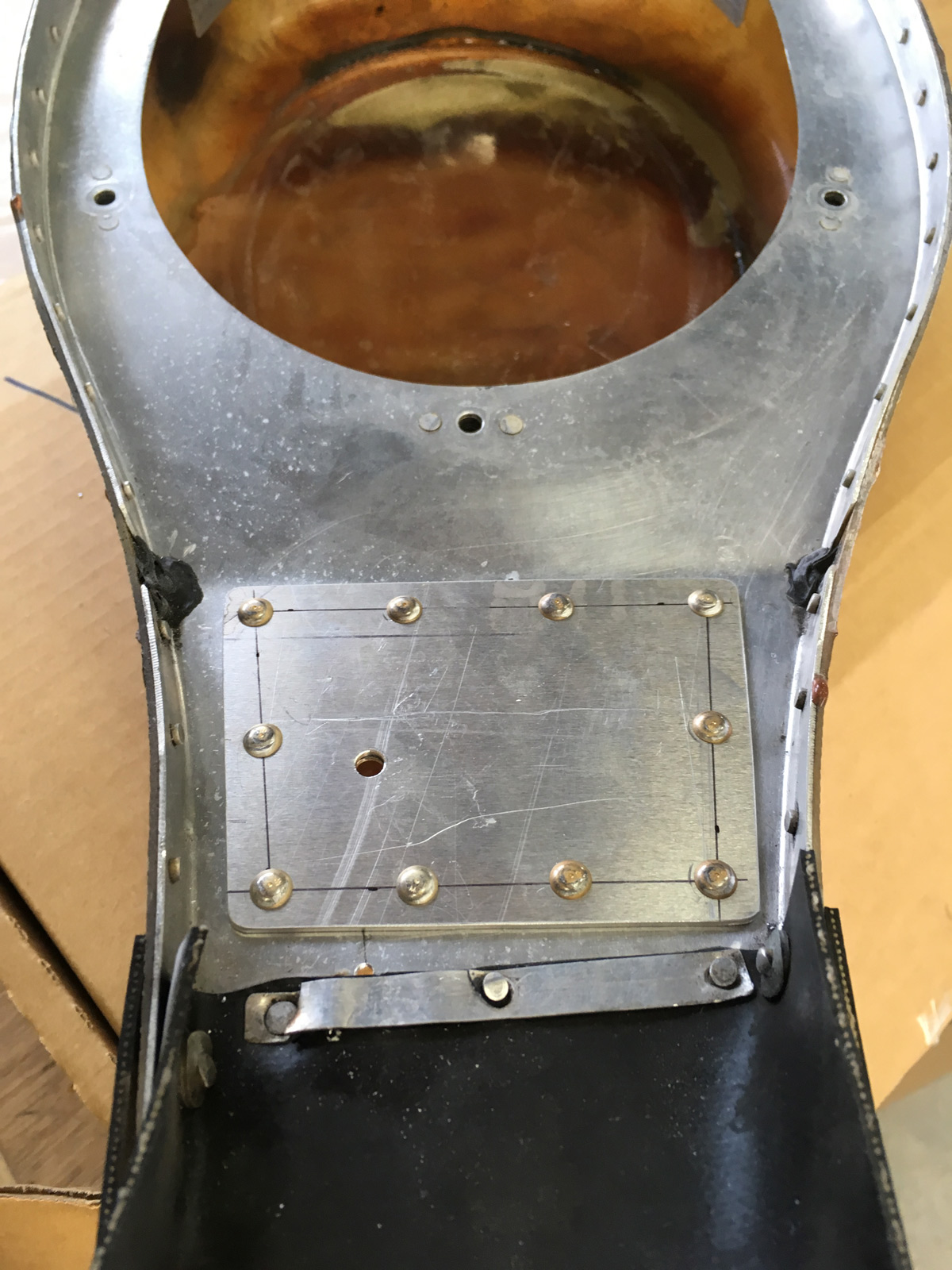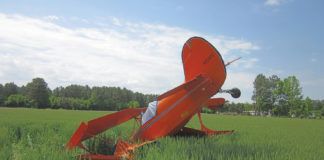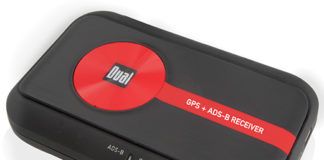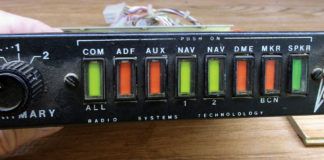I’ve worked on a lot of airplanes in my life, and one thing they all have in common seems to be air box problems. It doesn’t make any difference if they are made from metal fiberglass, or unobtanium – they all seem to be in a constant state of deterioration. From the day an airbox is born, it seems to be on the road to self destruction; vibration, abrasion, corrosion – all contribute to the eventual need for repair. Hanging far out on the end of a carburetor or fuel injection servo, they see more pulses from the power plant than most any of the items attached to the engine, except maybe the exhaust, which is designed for extreme exposures. Air boxes seem to be designed as light as possible, and therein lies the beginning of their demise.
Doing the annual condition inspection on our RV-3, I was therefore not surprised to find the typical problems we often see on a fiberglass box – in this case, the round air filter was trying to rub its way through the bottom of the composite box. I’ve seen it many times, as have countless others. There are many tricks to stop it. For instance, some put an aluminum plate under the filter – I have seen this work for awhile – until the edges of the plate rub their way through the fiberglass instead of the filter. You don’t get something for nothing, and stresses always go somewhere.
We also had a little cracking where our brace (that keeps the front end from bobbing up and down) attaches to the aluminum box top.
The fiberglass is actually easy to fix – a thorough cleaning, followed by pulling out some glass, resin, and a little peel-ply. The aluminum cracks are also simple – a nice doubler plate (that probably should have been there in the first place), some rivets, and a little stop drilling solves the problem.
But problems like this aren’t unique to Van’s air box. I have seen cracked and broken air boxes with numerous repairs on everything from Cubs to light twins. It is not uncommon to see patches on patches, worn bushings on carb heat shafts, and broken attachment points. No one wants to buy a new one, just to start the cycle over – we repair, and repair, and repair again – until there is more repair material than original. It’s just the nature of the beast, it seems. And in the end, a small price to pay on a non-structural item that lives in a very nasty vibration environment.

